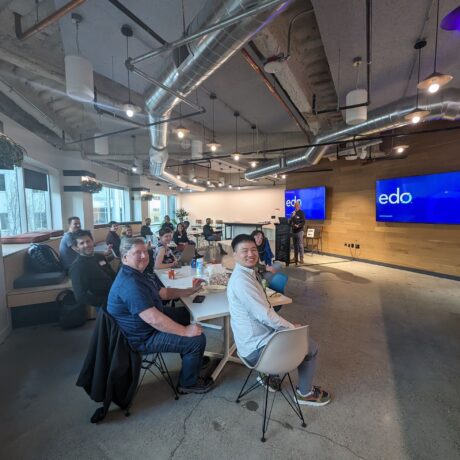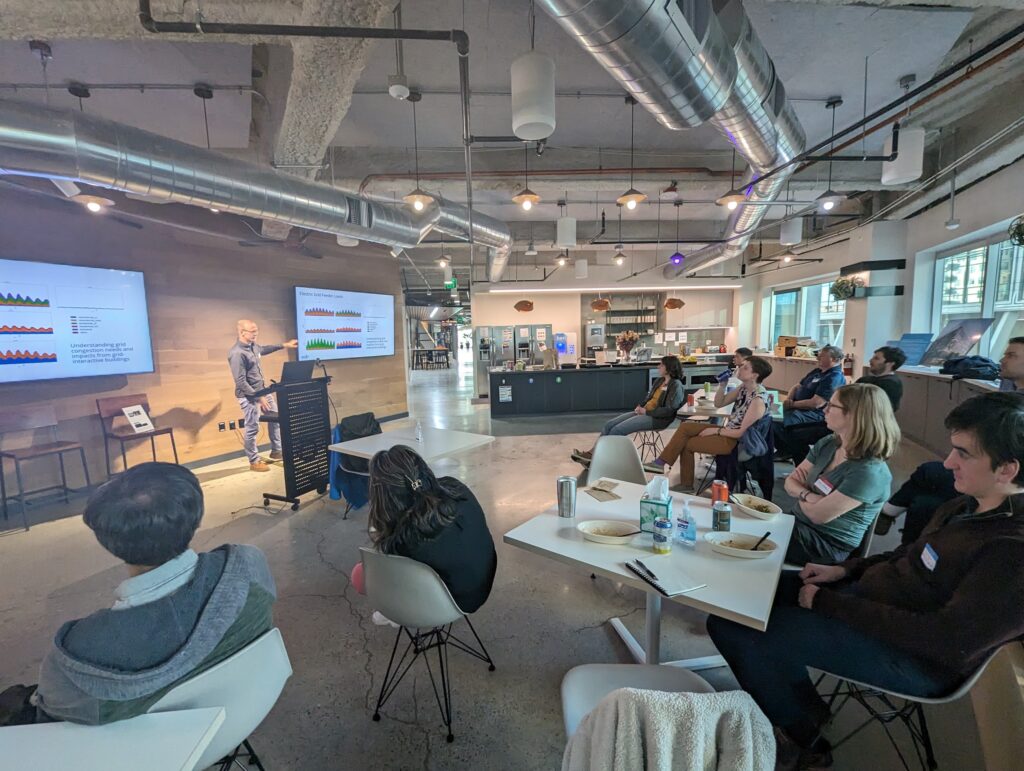IBPSA-USA Seattle Chapter: Building Grid Integration
The IBPSA-USA Seattle Chapter met in April at Arup’s Seattle Office for the chapter’s quarterly meet-up and to discuss all things related to building grid integration. James McNeill with Edo shared a brief presentation on how the integration of buildings into the electrical grid is a crucial step towards a sustainable and resilient energy future.


Key Takeaways
- There is an increase in interest in the utility sector for demand flexibility provided from grid-interactive buildings, including cooling and heating-related control measures.
- An estimate of demand flexibility impact can be simulated by applying DF controls to pre-existing building stock models (e.g., NREL EULP) using EnergyPlus, which can be aggregated to assess utility-scale impact.
- Implementation of demand flexibility requires forecasting the change in electric demand associated with control measures. This requires a combination of building physics and machine learning knowledge.
- A separate counterfactual demand reduction baseline is needed in addition to the energy reduction baseline. Day matching is commonly used by utilities, but more sophisticated techniques also exist.
- Building performance professionals will need a strong understanding of building demand profiles and underlying influences for assessing demand flexibility.
- Modeling the control of Virtual Power Plants (VPPs) requires aggregation of individual building models at various spatial scales (e.g., feeder, substation).
Industry Needs
- Improved tool capabilities for modeling realistic building response at higher temporal resolution (about 5 – 15 minute), including improved control modeling for building stock models.
- Ability to model building electrical systems (e.g., reactive power) and integration with electric grid models for modeling impact of grid services.
- Improved data-driven modeling methods for existing buildings that integrate machine learning, gray-box modeling, and data-driven modeling methods.
- Modeling methods that are scalable to large number of buildings in utility service territories (i.e., thousands of buildings).
A special thank you to Arup Seattle for hosting this event!
Interested in joining an IBPSA-USA chapter near you? Find a local chapter here or contact chapters@ibpsa.us for more information.

